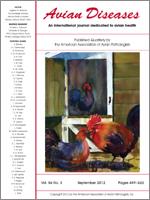Avian hemosporidian parasites of the genera Haemoproteus, Plasmodium, and Leucocytozoon are transmitted by different dipteran vectors. In the present work, we looked for the presence of these parasites in 47 birds from 12 families, which were sampled in the migratory corridor Paso de Portachuelo, located at the Henri Pittier National Park, Venezuela. The presence of the parasites was evidenced by amplification of a region of 471 bp of their cytochrome b gene. This region of the marker presents enough polymorphism to identify most of the mitochondrial lineages. Therefore, the obtained amplicons were sequenced, not only to identify the genus of the parasites sampled, but also to analyze their genetic diversity in the study area. The overall parasite prevalence was low (11%). We reported, for the first time, Plasmodium in birds of the species Formicarius analis and Chamaeza campanisona (Formicariidae) and Haemoproteus in Geotrygon linearis (Columbidae). A phylogenetic tree was generated using the Haemoproteus, Plasmodium, and Leucocytozoon sequences obtained in this study, together with representative sequences from previous studies. The highest genetic diversities between the two Haemoproteus lineages (11.70%) and among the three Plasmodium lineages (7.86%) found in this study are also similar to those found when lineages reported in the literature were used. These results indicate that in the migratory corridor Paso de Portachuleo, representative parasite lineages are found, making this location an attractive location for future studies.
How to translate text using browser tools
1 September 2012
Hemosporidian Parasites in Forest Birds from Venezuela: Genetic Lineage Analyses
Alfredo Mijares,
Romel Rosales,
Adriana Silva-Iturriza
ACCESS THE FULL ARTICLE

Avian Diseases
Vol. 56 • No. 3
September 2012
Vol. 56 • No. 3
September 2012




